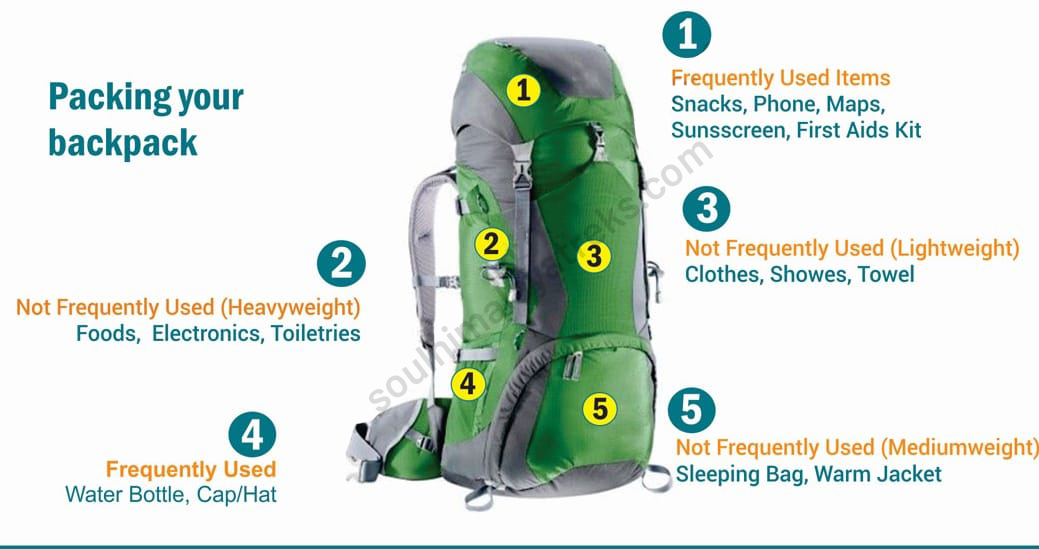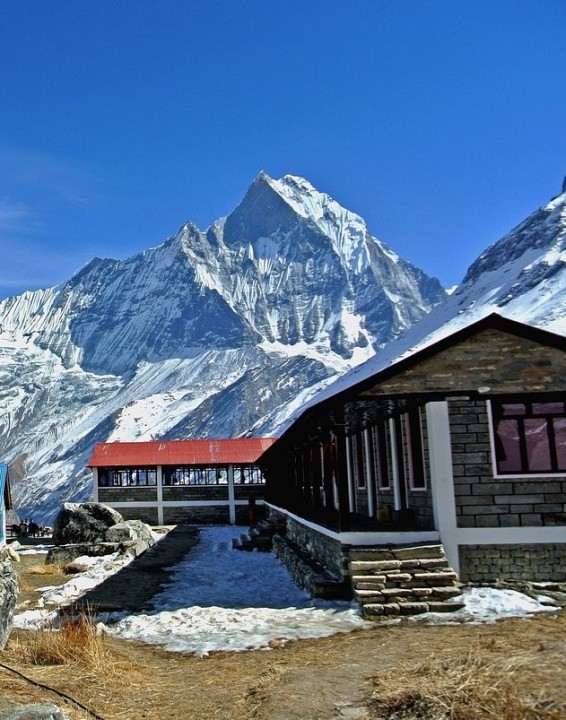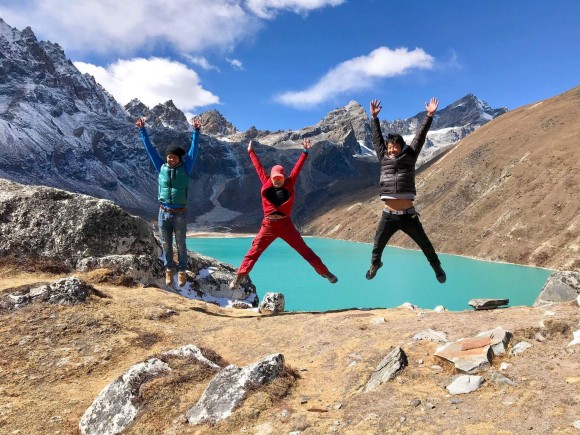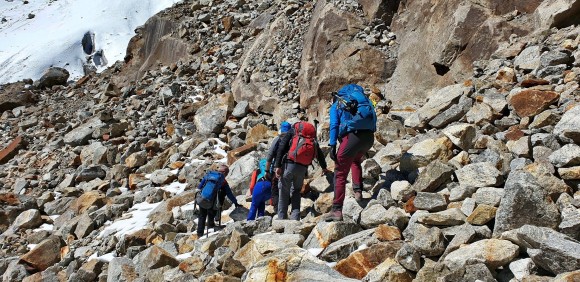
Sarki Sherpa (Mountain Leader)
Feb 24,2020Packing List For Trekking In Nepal
In Nepal, most trekking begins at moderate temperatures from the lower altitude to higher altitudes at cold temperatures. Thus, it is better to dress in layers so that with the temperature variation you can change your clothing. Wise preparation is very important when camping or trekking. Packing will make or exacerbate your experience on trekking. The following list of Nepal trekking equipment is a general guide. We assume that this equipment provides the best value for money while also delivering the best output.
Things To Consider While Packing For Nepal Trekking
.jpeg)
Headgear
Woolen Hat/ Beanies: When the sun fall and temperatures go down or at high altitude treks, woolen hat/ beanies can come in handy.
Sunhat: During the day when the sun is up and high you'll need the cap or the sun hat. It covers you against the light and saves you from sunburn.
Sunglass: A good pair of high-quality UV-protected sunglasses is recommended, as there are greater levels of harmful radiation at a higher altitude. It prevents headaches, dizziness, and snow blindness.
Head Torch: Many of Nepal's distant trekking routes lack electricity. A head torch will help immensely illuminate your path to your destination, as the night crawls in.
Upper Body
Thermal Baselayer: When deciding on a good base layer you should not compromise on the quality of the material. Long-sleeved synthetic vests are essential for trekking in the Himalayan region.
Lightweight Thermal Tops: Lightweight thermal tops will help keep your body moist and the sweat wick away.
T-shirts: The best options to have while trekking are a blend of long and short-sleeved t-shirts. It is advised to use lightweight synthetic t-shirts because they clear the body's moisture quicker than other fabrics.
Waterproof Jackets: When the weather goes down, a fine, waterproof jacket is needed. Your hardshell will protect against wind, rain, and snow.
Fleece Jackets: When the weather turns chilly, Fleece can just add that extra bit of comfort and warmth. A fleece jacket is made of recycled polyester material such as Polar Fleece and is lightweight.
Sports Bra: When on the move in the mountains, a good sports bra is highly recommended. A good quality synthetic sports bra removes the sweat moisture and will keep you dry while you are trekking.
Lower Body
Hiking Shorts: At lower altitudes, and under the sun, wearing a pair of hiking shorts can be comfortable and cooler than pants.
Waterproof Pants: In the summer or winter seasons, if you go for a walk, you'll face any rain or snow. So, to keep yourself safe you'll need insulated or windproof shell pants.
Lightweight Hiking Pants: Lightweight nylon hiking pants guard you against the elements (protective against UV, air-permeable).
Undergarments: Synthetic undergarments are a good choice for Nepal trekking. This fabric is highly wicking, quick-drying, and also best for long and demanding treks.
Handwear
Lightweight Fleece Gloves: Fleece is soft and cool that can be used as internal gloves.
Heavyweight Gloves: As you have to deal with low temperatures, you will need heavyweight gloves for extra warmth. It must be waterproof and durable to protect you against wind, rain, and snow.
Footwear
Inner Socks: You can get thin inner socks with moisture which will keep your feet dry. Good hiking socks must be breathable so choose nothing made of cotton.
Thick Woolen Hiking Socks: Waterproof wool hiking socks of good quality should keep your feet dry, comfortable and will protect you from blisters.
Hiking Boots: If you're heading to hike to Nepal, of course, you'll need a good pair of hiking shoes. The terrain can be quite uneven and rocky, thereby hiking boots are advisable over normal running shoes.
Trekking Poles: Trekking poles can reduce the strain on your knees and will also help you balance the steep walks. For trekking in Nepal it is recommended to use lightweight walking poles which are easy to store, versatile, and durable.
Personal Equipment
Sleeping Bags: As evenings can get extremely cold in Nepal, especially in the mountains, the blanket provided by the mountain lodges may not be sufficient. So we suggest carrying a sleeping bag with an insulated hood to get a comfortable and warm night's sleep.
Reusable Water Bottles: A reusable water bottle can be used to carry water and can be replenished at certain stops with clean and filtered water. You can also hold purification tablets, and a Steri-pen to purify the tap water.
Water Purifier: Some trekking lodges have drinking water that is purified and clean. Nonetheless, you may not find safe drinking water all over the road. Carry your own water purification tablets or drops with you to make it drinkable.
Towels: Some of the mountain-area tea houses won't provide you with towels. So, it is better to carry your own small, quick-drying personal towel.
Sunscreen: The sun's rays are exceptionally powerful when trekking in high mountain regions. So, include a decent SPF sunscreen in your Trekking Gear collection with a minimum of 40 SPF.
Moisturizing Skin Cream and Lip Balm: The mountain air really dries out your skin and lips. It will really come in handy to have a little tube of moisturizer and lip balm to keep them moist.
Hand Sanitizer: The track can get muddy and powdery. So, remain on the safe side, and get the sanitizer with you.
First Aid Kit: Apart from your doctor's prescribed medication, you can carry a small first aid kit. Pack your first aid kit according to the location of the visit and the number of days of trekking.
Toiletries: The most important thing to carry when trekking is toiletries. As you get to more remote areas, toiletries get rarer and more costly.
Camera with extra batteries: It is important to take the lightest gear possible whether you are a DSLR user or just have a compact camera. Electricity is uncommon in most locations as you go trekking. Don't forget to have additional batteries and extra memory cards too!
Backpack: Your Backpack comfort is very important as you trek. While all the extra space is enticing, among the smaller choices you'll want to choose from 45 and 65 litres. Carrying a rain cover for your pack to shield it from rain and snow is always a good idea and keep all your items, you need to have multiple bags. Particularly during camping treks, you might require additional bags to keep your sleeping supplies.
Sleeping bag: sleeping bags are required during camping treks. Although you are provided the sleeping mats and pillows in your package, you will have to carry your own sleeping bag. These banks can be rented in a local trekking shop in Paro town. Buy sleeping bags rated 32-degree Fahrenheit/ 0 degrees Celsius or colder.
Duffle Bag: In the duffle bags you will place all the essentials needed during the evenings and nights. In addition, you can attach sacks for your dirty laundry and shoes. Don’t forget to cover the duffle bag with waterproof and use small locks for them. It will be carried by our support team or yak or horse.
Day Pack: Day packs are essential bags that hold only the most necessary things required during the day for trekking. You will be carrying this pack, unlike the duffle bag. Use a waterproof cover for your day packs. In general, it contains your documents, money, outer layer, required toiletries, water bottle, snacks, personal medication, rain poncho, phone, camera, and a few essential trekking equipment and electronics.
How To Pack Your Backpack

Packing all the above-mentioned checklist in alignment with the trekking destination, days and season, ensures that you go to Nepal, well prepared without the hassle of forgetting anything. Most vital above all are the base, mid and outer layer apparel, trekking equipment and gears, documents, money, health kit, hygiene and personal care kit ad electronics. If you have packed all of these, then you are fully covered. If you are planning to explore Nepal without any complication. so please feel free to contact us for expert advice from our professional trekking Guide.
Related Blogs
View allYou are only as old as you feel. Sure, some mornings you can wake up and your body can be a little stiffer and a little sorer than you would like but that in no way means you are old.
Nepal Is A Hub Of Cultural Diversity. In Nepal, You Can Spot The Variance In Culture, Lifestyle, Religion, Tradition, And Language In Such Vast Amount That You Can See Nowhere Else On The Planet.
Il y a maintenant un an jour pour jour, 16 sherpas ont été emportés par une avalanche au milieu de la dangereuse « cascade de glace », premier passage à risque jusqu’au sommet du mont Everest.
If anyone have a plan to visit Nepal, I humbly request you to give main priority to my village. I had participated in the losar program in Bhigutaar sherpa village which is rich in cultural, traditional, linguistic and natural diversity.
Responsible Tourism is all about "making better places for people to live in and to visit." Soul Himalayan Trek and Tour- Nepal is accepted and has been adopted all relevant stakeholders, as well as strong political leadership to ensure wide participation and take responsibility, take action to make sustainable tourism.
There are many references and interesting evidences prove that the Sherpa people were the first inhabitants of the Eastern Himalayan region in present Nepal before the territorial demarcation in East Asia into the nations
Probably one of the first major reasons why you heard about Nepal in the first place was due to our magnificent mountains and the mighty Himalayas
Nepal Treks is not only a simply phenomenal undertaking but also a perfect opportunity to enjoy rare and exotic cultures alongside the magnificent Himalayas
Nepal is a safe place to travel in normal circumstances. Although there are challenging hikes, the paths are clear and guides are available. Residents are incredibly warm and welcoming in Nepal.
Search Trips
Our top-selling trip
Here are some of our most popular trips. Join the Soul Himalayan Travel team to experience Asia at its best.





















